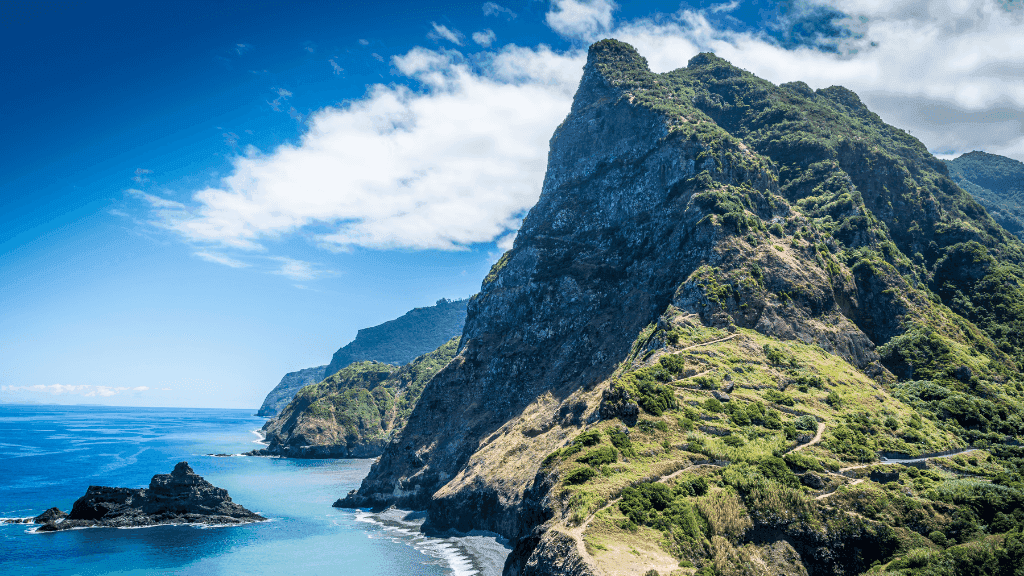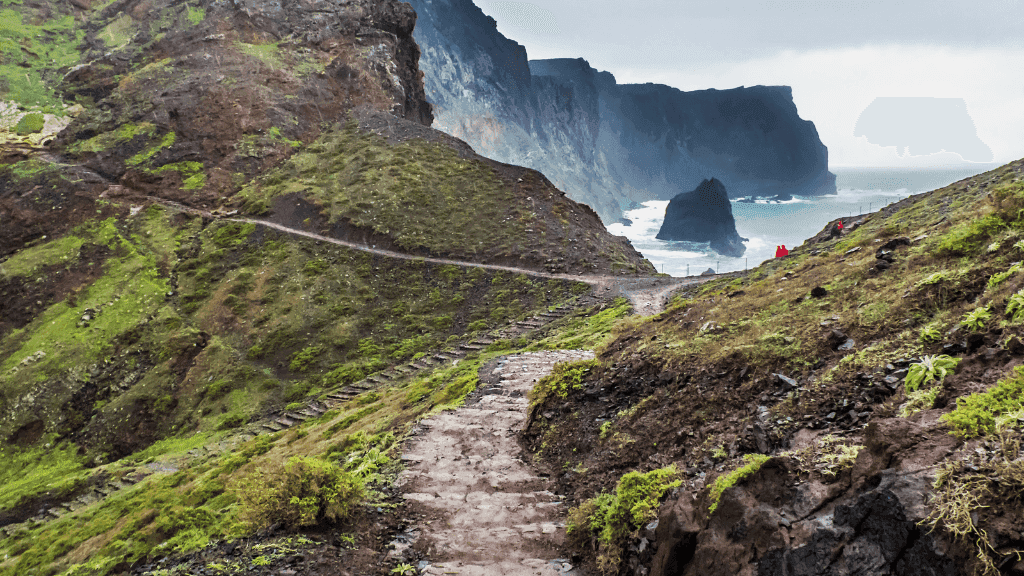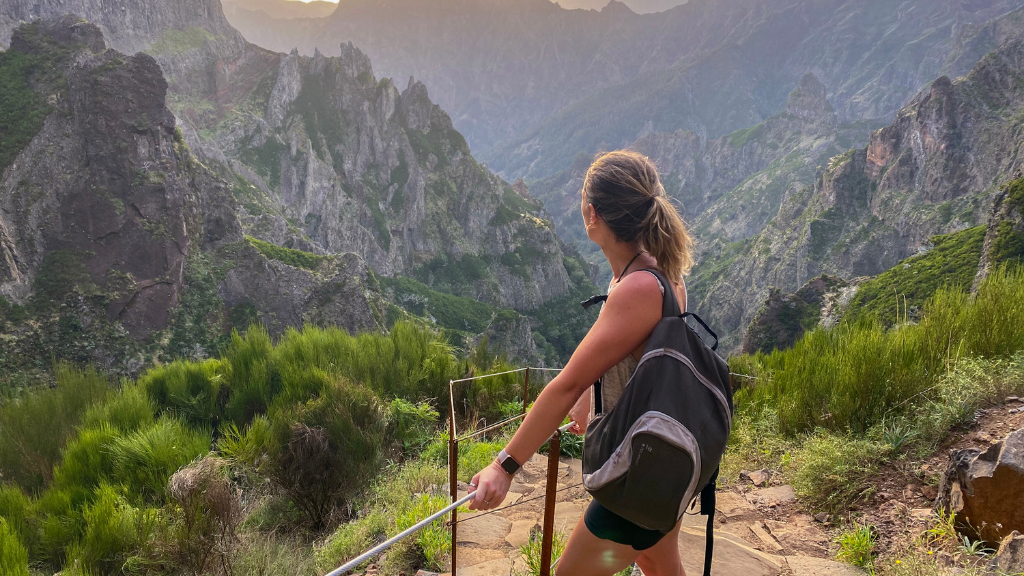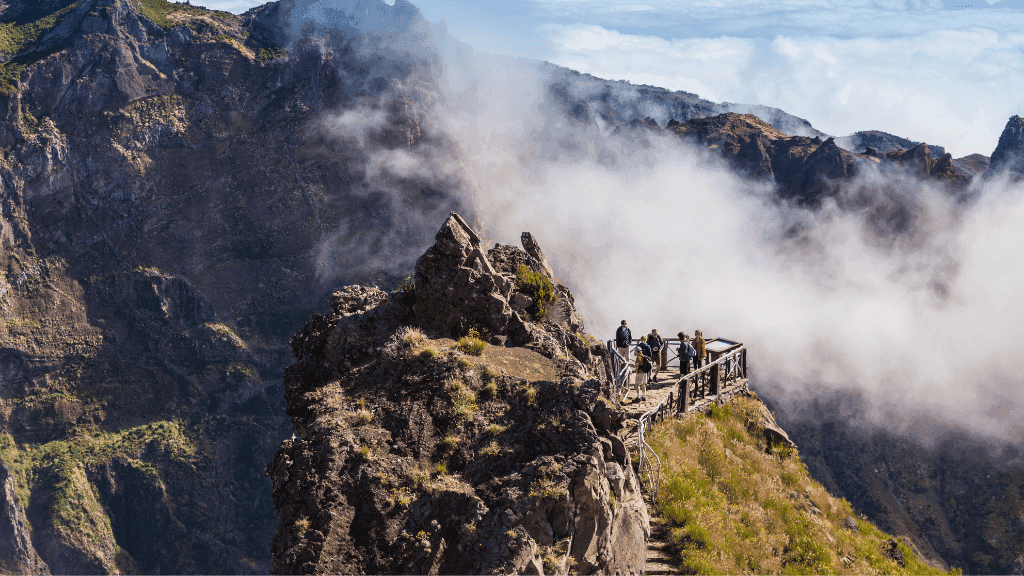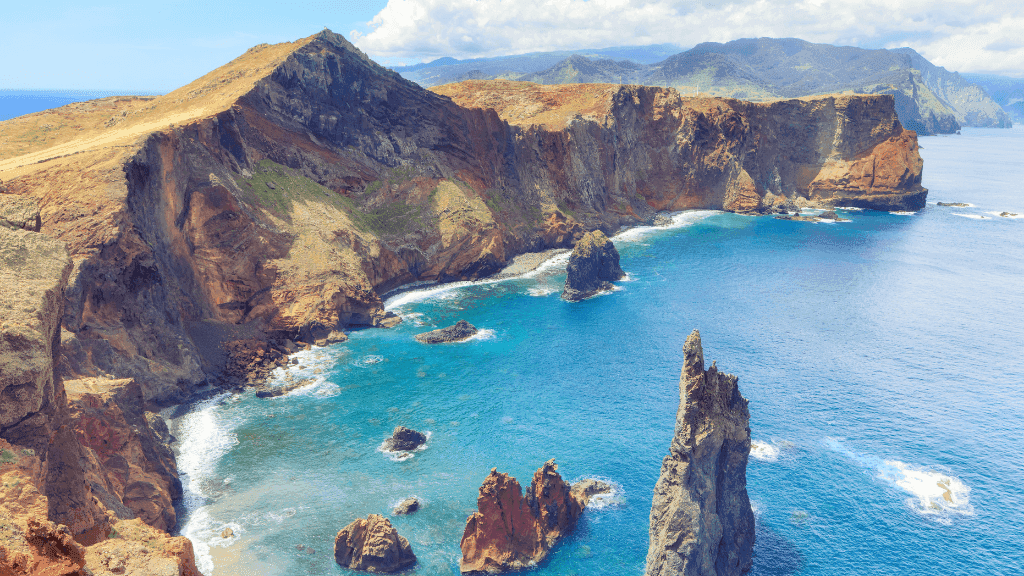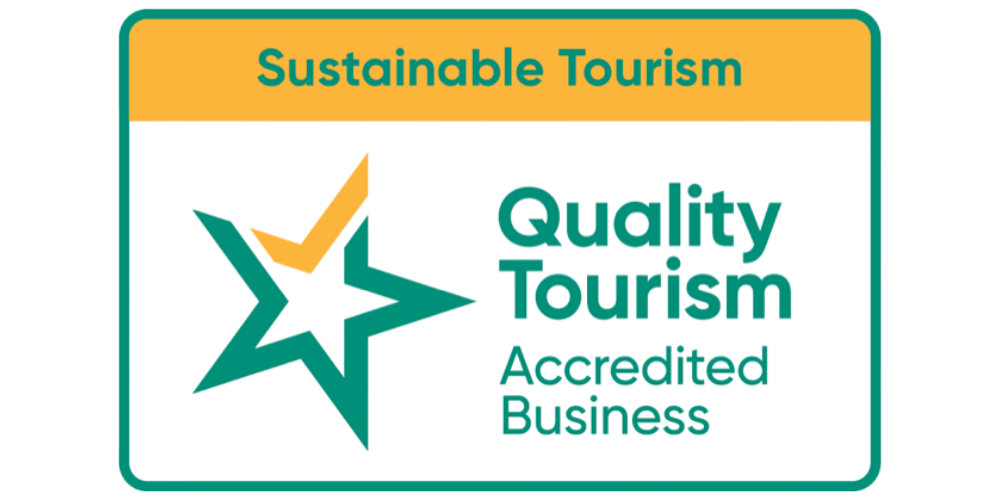Seasonal Weather Expectations
Madeira is known as the “island of eternal spring”, but the weather shifts dramatically between the coast, the peaks, and the time of year. Here’s what to expect:
Spring (March – May)
Wildflowers blanket the hillsides, and temperatures sit between 16–22°C. Rain is still possible, especially in the north, so a light waterproof is essential. Trails are green, lush, and full of birdlife.
Summer (June – August)
The warmest and driest months, averaging 22–27°C on the coast. At higher elevations, it’s cooler, so expect 12–18°C at the summits. Long daylight hours make this the best season for those who love sunshine on the trail.
Autumn (September – November)
Comfortable hiking conditions with 18–25°C days, fewer crowds, and harvest season in full swing — a perfect time to enjoy Madeira’s wine culture after the day’s trek. Occasional showers return, keeping the island fresh and green.
Winter (December – February)
Mild coastal temperatures (14–20°C) but cooler, mistier weather in the mountains. Peaks can dip to 5–10°C, and cloud cover often rolls in. Trails are quieter and atmospheric, ideal for those who don’t mind swapping sunshine for moodier landscapes.
Overall: Madeira is walkable year-round. Just be ready for four seasons in one hike — sunny coastlines, misty forests, and crisp mountain air all in a single day.



